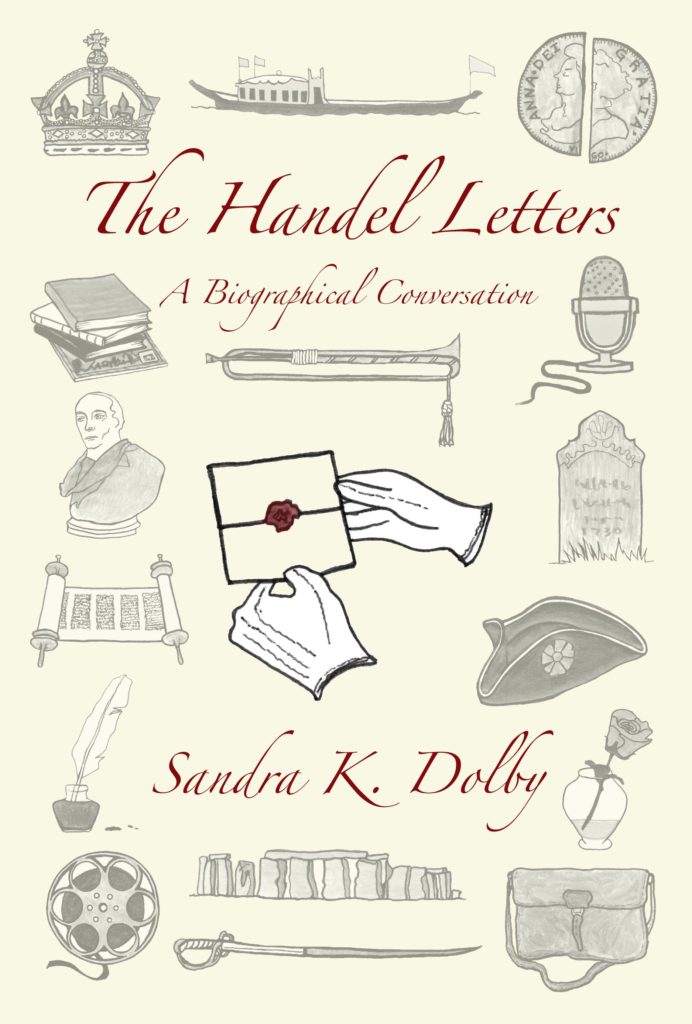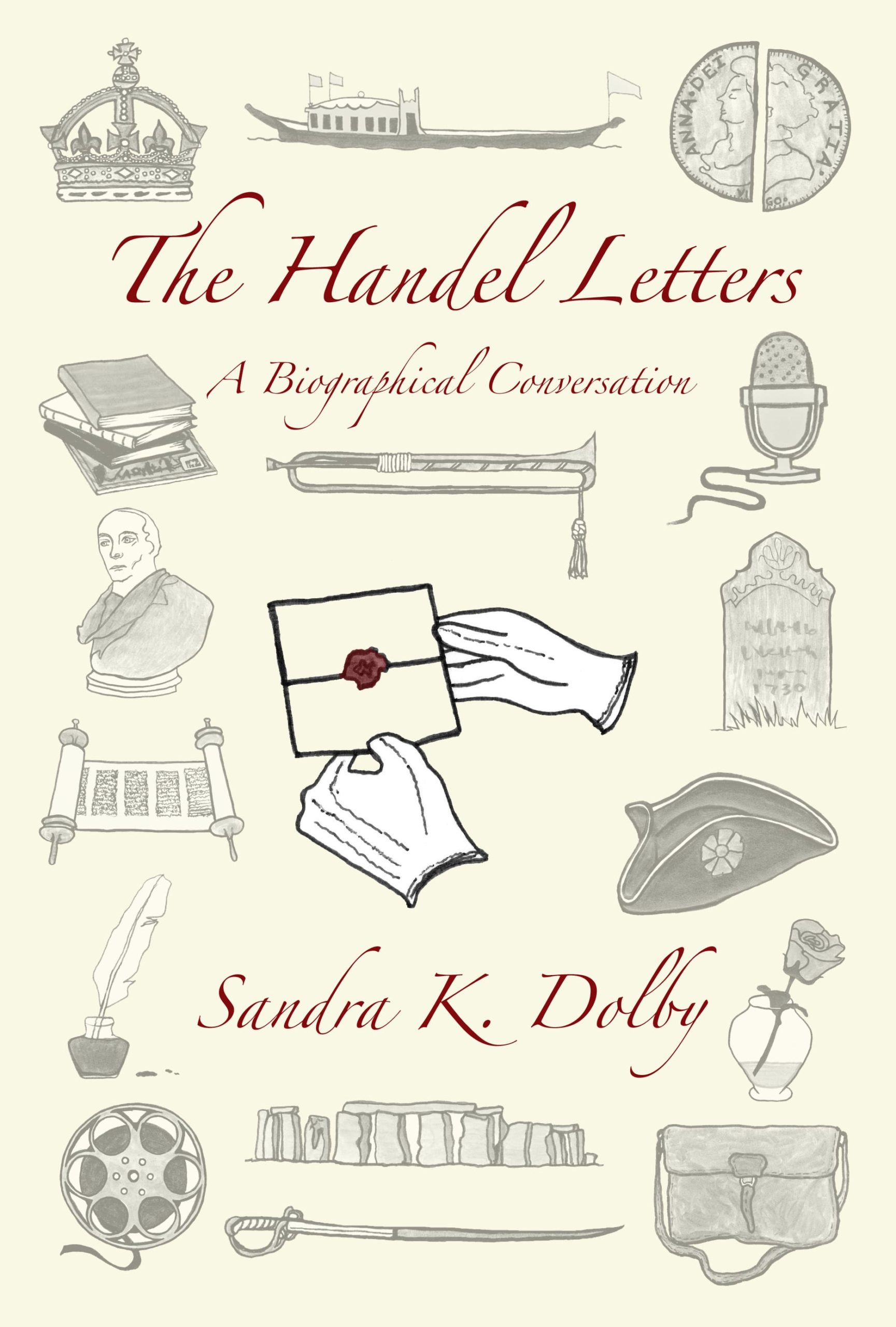
A Blog about Handel and Books and Teaching and Folklore
February 5, 2018
I may eventually move on to another task in writing this blog, but for now my aim is to expand upon some of the content and ideas in my recently published book, The Handel Letters: A Biographical Conversation, and, hopefully, to stimulate thoughts and responses from you who take the time to read these short essays. I plan to move through the book from beginning to end. As Maria says in the “Do-Re-Mi” song in The Sound of Music, “Let’s start at the very beginning, a very good place to start.” She then proceeds to teach the von Trapp children the musical scale, using the sol-fa syllables for the major scale. I suppose I will never escape being a teacher, so I will follow Maria’s teaching practice and start at the very beginning.
First, I invite you to purchase or borrow the book. It is available in paperback or as an ebook, and by now I hope libraries have a copy available. Please ask them to order it if they don’t. The ISBN is 9781977669179. I like the paperback, and my first order of business will be to describe how the physical entity—the 626-page book—came to be.
Throughout my career as a professor, I was expected to write “scholarship”—books and articles that added in some way to our understanding of my chosen academic field. And those scholarly works were published by university presses (books) or peer-reviewed journals (articles). My Handel project was not that kind of writing. It did involve research, certainly, but I decided to write with a different audience and objective in mind. I may say more about that later, but for now, the related decision I made that I want to share here is the decision to self-publish, to not seek out a publisher but instead to have everything pretty much under my own control. It was an exhilarating experience. It’s not that I regret having published through traditional presses and journals, but this time, it was fun, as a retired professor, no longer worrying about tenure or promotions, to simply see what could be done without a publisher—or, as one Handel biographer would say about Handel’s efforts to compose without a patron, I chose to undertake this publication “on my own bottom.”
I didn’t just jump into the process blindly. I read lots of blogs online on how to self-publish. I researched the various possibilities—Amazon’s CreateSpace, BookBaby, and other resources. And I watched one very informative Great Courses course on “How to Publish Your Book [ https://www.thegreatcourses.com/courses/how-to-publish-your-book.html ]. The person giving the lectures was Jane Friedman, a professor and publishing professional. I found her advice very helpful. Self-publishing was only one possibility she presented, and she was very clear about the potential down side of deciding to self-publish. As I said, my own decision was influenced very much by my own situation. I wanted to do something quite different from the kind of writing and “publish or perish” activity that dominated my career as a professor.
In the end, I decided to go with Amazon’s CreateSpace paperback publishing enterprise and then add the ebook format afterwards. If you are a skilled formatter, you can do all of the preparations yourself and set up publication on demand through Amazon for free. I knew that the formatting tasks were beyond me, so I opted to pay for that service, letting their professionals format the content following my directions. I was very pleasantly surprised at how easily this was done and with how good the final product looked. I did not use their paid editing or cover design services, but I thought the interior design service was well worth the money. Sadly, just this month CreateSpace has announced that they will no longer offer that service, though they will continue to publish books already formatted and ready to print.
As I was preparing my manuscript, I consulted again several online sources, and I bought a helpful guide, CreateSpace for Beginners, by M. L. Humphrey. The guidebook would be especially helpful if you planned to do the formatting yourself, but I found it useful in others ways as well. The author even addressed the differing advantages and disadvantages in creating a print copy for book of fiction or a nonfiction piece. For my book, I wasn’t quite sure how to categorize the work. Is The Handel Letters a biography of Handel and thus a work of nonfiction, or is it a work of historical or literary fiction? I would be curious to know how you might categorize it after you have read it.
Let me finish this essay with a quick comment on the cover and illustrations. Again, part of the reason I chose to self-publish was that I wanted to decide on the cover and if and when I would insert illustrations. For years I have admired the nineteenth-century and early twentieth-century fairy tale collections that offered wonderful illustrations. The Dover version of George Webbe Dasent’s translation of the Norwegian tales, East o’ the Sun and West o’ the Moon, is one of my favorites, in part because of the wonderful illustrations. More recently, I liked the way J. K. Rowling included illustrations at the head of each chapter in all seven of the Harry Potter books.
I did not want anything like a graphic novel, but I did like the idea of having some memorable image from each chapter heading up the writing, along with a paragraph of slightly off-subject narrative. So, I opted for selecting a kind of icon from each chapter and discussed the possibilities with my artist/illustrator—my daughter, Alexis Stahl. She created the illustrations from my suggested ideas, and she designed the cover using some of those same illustrations. I couldn’t be more pleased with the end product. Next time I will say a little more about the illustrations and ponder further the category into which we—or libraries—might place the book.
